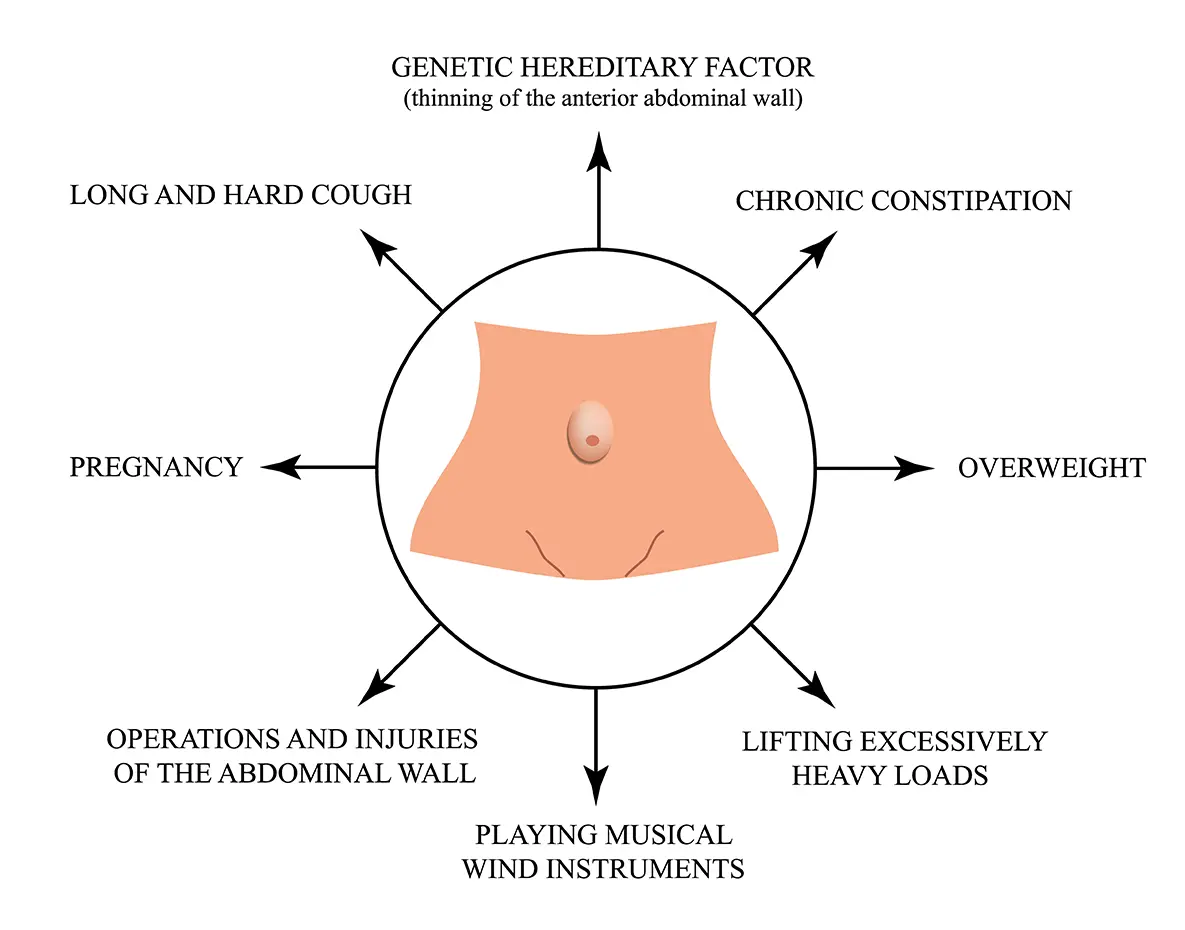- Home
- Robotic Knee Surgery
- General Surgery
- Orthopaedic
- Other Specialities
- About us
- Blogs
- Contact
24 Hours Accident, Trauma & Other Emergency Services . . .
Get Free Consultation
What is Umbilical Hernia
When the section of your intestine bulges through the gap in your abdominal muscles around your bellybutton, it's called an umbilical hernia. Although umbilical hernias are most frequent in infants, they can also affect adults. You may require to go through Umbilical Hernia Surgery if the condition is critical. Whether it is a general surgery or an umbilical hernia laparoscopic surgery, the surgeons will decide based on the type of hernia. So, visit Kapadia Multispecialty Hospital to know the cost estimate or the exact hernia surgery cost in Mumbai depending on the procedure today.
Causes of Umbilical Hernia
The causes of umbilical hernia vary according to age.

Causes in Infants
As the foetus develops in the womb, a little gap in the abdominal muscles allows the umbilical cord to pass through.
The gap should close around the time of birth, or soon afterward. If this does not happen completely, fatty tissue or a portion of the intestine may protrude, causing an umbilical hernia near belly button and may require umbilical hernia surgery.
Causes in Adults
Some fatty tissue or a segment of the colon can pop through a weak section of the abdominal muscle if there is too much strain on the abdominal wall.
High-risk individuals are more likely to have higher-than-normal pressure in regions where fatty tissue or sections of the intestines can protrude. This may lead to hernia repair surgery.
Symptoms of Umbilical Hernia
A bulge in the navel indicates an umbilical hernia. When the baby is laughing, crying, or coughing, it may become more visible. The lump may decrease or disappear altogether when the baby is resting down or calm.
Regardless of the size of the hernia, if the abdominal wall constricts around it, blood flow to the protrusion is cut off, resulting in agony. The discomfort might be minimal to severe. The signs and symptoms of an umbilical hernia differ from case to case. Few of them are:

Constipation

Fever

Nausea

Vomiting

Redness or other discoloration

Severe abdominal pain
How it is treated ?
Most umbilical hernia in babies heal within two years. However, if the hernia is more than 1.5 cm across in children over the age of 2 years and the intestines are trapped within the hernial sac, restricting or limiting intestinal movement, a umbilical hernia doctor may propose surgery.
Surgery Umbilical hernia surgery is a quick procedure that takes about 20–30 minutes to complete with a general anesthesia. An incision(small cut) is made at the base of the bellybutton, and the projecting tissue is pushed back into the abdomen. Depending on the situation, hernia may be repaired through a, laparoscopic hernia surgery or it can be other open surgeries.
Following certain situations, the surgeon may close the opening by suturing the muscles of the abdominal wall together. In some instances, they may utilize specialized meshes to reinforce the area and reduce the likelihood of recurrence. For detailed information regarding umbilical hernia surgery and to consult with a specialist umbilical hernia doctor, visit Kapadia Multispecialty Hospital. Take action today for a healthier tomorrow.

